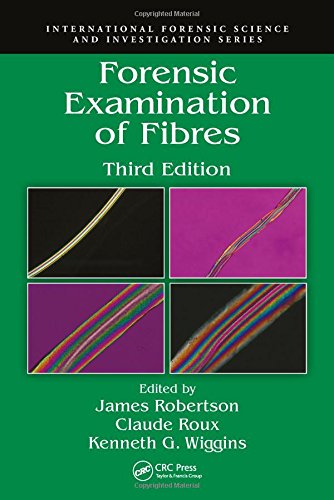

Most ebook files are in PDF format, so you can easily read them using various software such as Foxit Reader or directly on the Google Chrome browser.
Some ebook files are released by publishers in other formats such as .awz, .mobi, .epub, .fb2, etc. You may need to install specific software to read these formats on mobile/PC, such as Calibre.
Please read the tutorial at this link. https://ebooknice.com/page/post?id=faq
We offer FREE conversion to the popular formats you request; however, this may take some time. Therefore, right after payment, please email us, and we will try to provide the service as quickly as possible.
For some exceptional file formats or broken links (if any), please refrain from opening any disputes. Instead, email us first, and we will try to assist within a maximum of 6 hours.
EbookNice Team

Status:
Available4.5
25 reviewsRobertson James. (ed.) Forensic Examination of Fibres 3 ed. [International Forensic Science and Investigation] 2018 [pdf 486sc 465c. 17.16mb]
In order for forensic fibre examiners to fully utilize fibre and textile evidence during their analysis, they require not only specialised forensic knowledge but also in-depth knowledge of fibres, yarns and fabrics themselves. Production, both the chemical and physical structure, and the properties of these materials is required in order to determine the value of fibre evidence. This includes knowing production figures, fashion changes, sudden arrivals of new materials, dye variability, and numerous other factors that may have a bearing on the information obtained.
Fully updated with the latest advances, Forensic Examination of Fibres, Third Edition continues in the tradition of the First (1992) and Second Editions (1999) as the premier text on the subject of forensic fibre analysis. The international team of contributing authors detail the recovery of the evidence―through the different stages of laboratory examination―to the evaluation of the meaning of findings. The coverage has been considerably expanded, and all material, has been revised and wholly updated. Topics covered include examining damaged textiles, infrared microspectroscopy and thin layer chomatography, and colour analyses.
This edition also highlights the critical role of quality assurance in ensuring the reliability of the technical observations and results, and, in doing so, looks at the implications of supervisory managers and labs in the accurate and responsible analysis of such evidence.